We use cookies to help better serve your experience. Accept Cookies
Salon
How Science is Pictured in the Media and Public Culture: A Joint Reading the Pictures/Seeing Science (UMBC) Salon
If photography was invented so that the sciences could communicate with each other, now it’s as much about making that investigation relevant to consumers, investors and alternately curious, fearful or enthralled citizens.
By Sandra RoaThis discussion is interested in science as a social agenda and a media phenomenon. It’s about the popularization of science, the attitude and approach on the part of science toward its own activities and what the general public sees of it.
On December 1st, 2016, the Reading the Pictures Salon brought together seven experts, drawn from the ranks of curators, photo editors, visual scholars and scientists, to analyze a group of ten news and media photographs. The live discussion took place on the Google HangOut platform accommodating live audio and video with viewer participation via live chat. The Salon was jointly produced with the University of Maryland, Baltimore County as part of SEEING SCIENCE, a year-long UMBC project that explores the role photography plays in shaping, representing, and furthering the sciences.
Through original photo research, Reading the Pictures and UMBC identified ten key images representing science in the media for the panel discussion. Fifty more media images, drawn from sixteen categories of science, were featured on Twitter and Instagram in the six weeks leading up to the live event. Those images and descriptions, along with video highlights from the two hour panel discussion, will be archived here in the coming weeks.
Highlight Clips
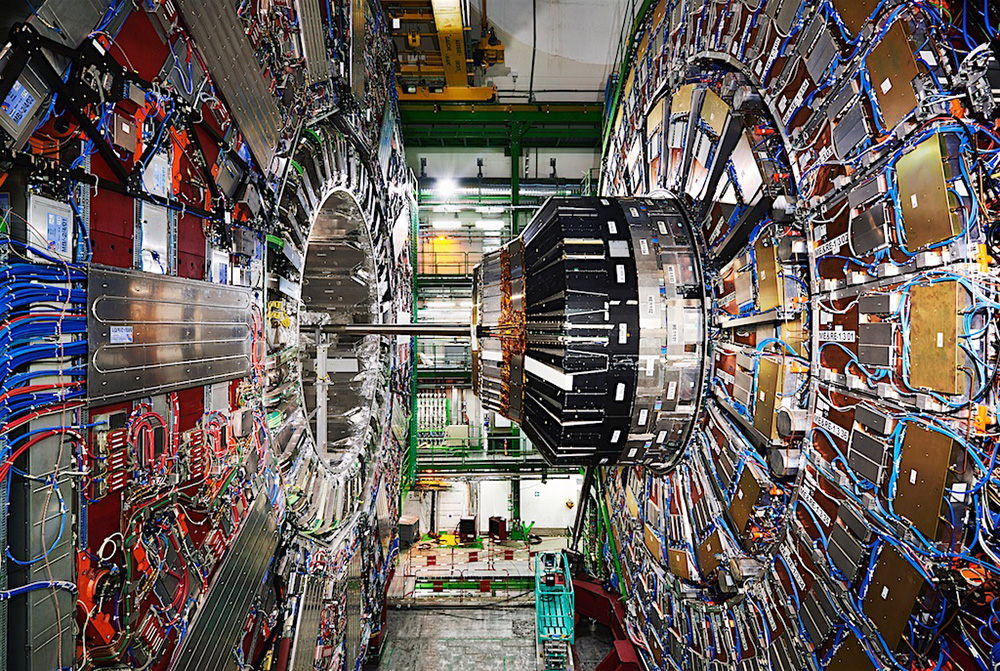
Seeing Science: The CERN Hadron Collider
In this highlight clip, Reading the Pictures Salon moderator Nate Stormer and panelists Kurt Mutchler, Rebecca Adelman, Marvin Heiferman, Ben de la Cruz, Corey Keller, and Max Mutchler explore the colorful, abstract and intricate depiction of a very large scale scientific object.
Watch NowCMS Detector: Compact Muon Solenoid Experiment is one of two large general-purpose particle physics detectors built on the Large Hadron Collider at CERN, Switzerland. The CMS detector is capable of studying many aspects of proton collisions. Photo: Enrico Sacchetti and used with permission. Photo: Enrico Sacchetti and used with permission.
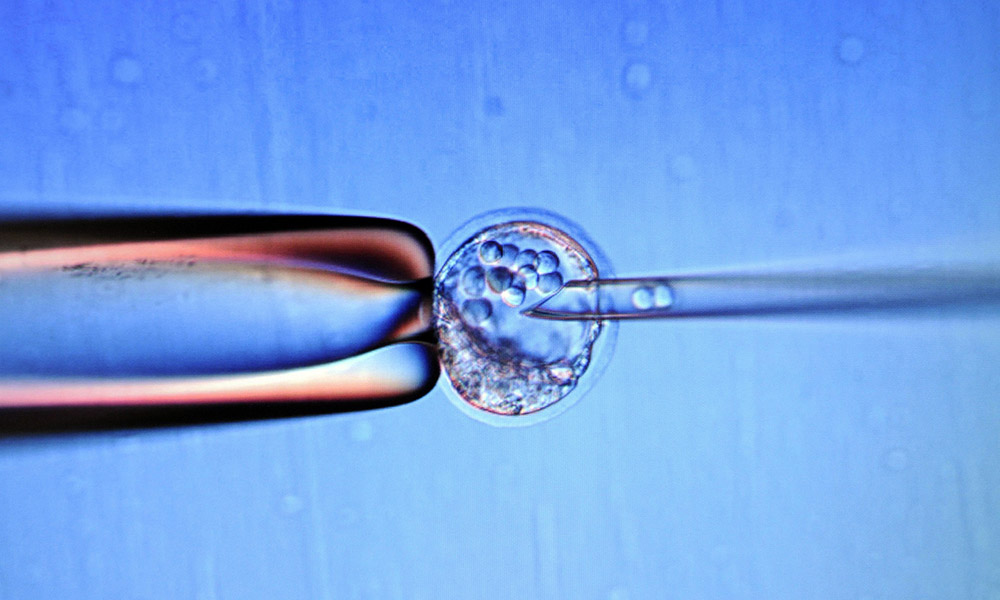
Seeing Science: Stem Cell
In this highlight clip, Reading The Pictures Salon moderator Nate Stormer and panelists Corey Keller, Kurt Mutchler, Marvin Heiferman, Ben de la Cruz, discuss the context and ethical considerations of this image of the modification of a human embryo.
Watch NowMany scientists believe that modifying human embryos in this way crosses an ethical line. Photo: Anne-Christine Poujoulat/AFP/Getty Images.
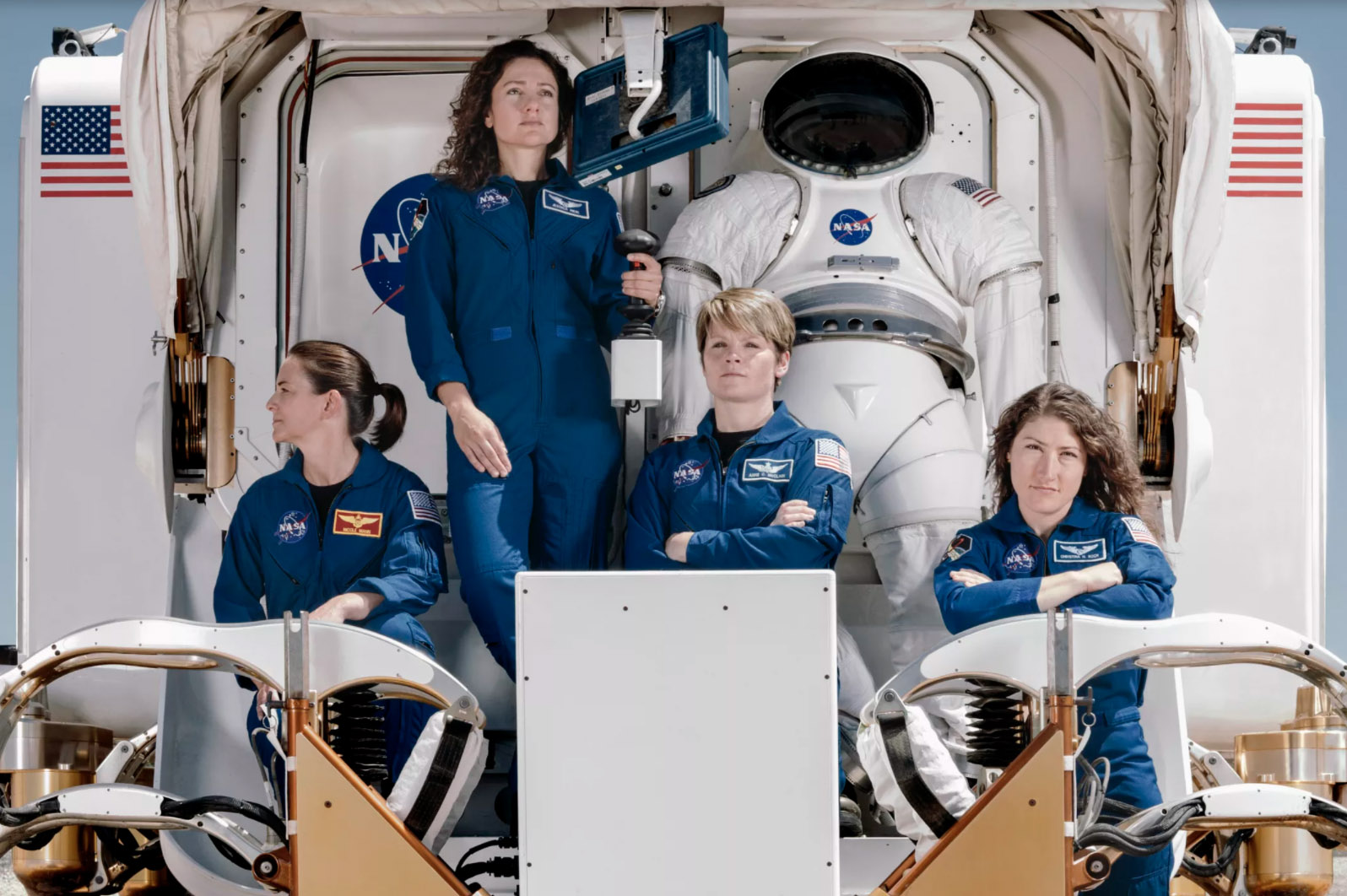
Seeing Science: Women of NASA
In this highlight clip, Reading The Pictures Salon moderator Nate Stormer, Marvin Heiferman, Rebecca Adelman, Corey Keller, and Ben de la Cruz, explore the composition, balance and body language in this photograph of female astronauts from NASA.
Watch NowFour extraordinary women make up half of NASA’s most recent astronaut class—and they may go to Mars.
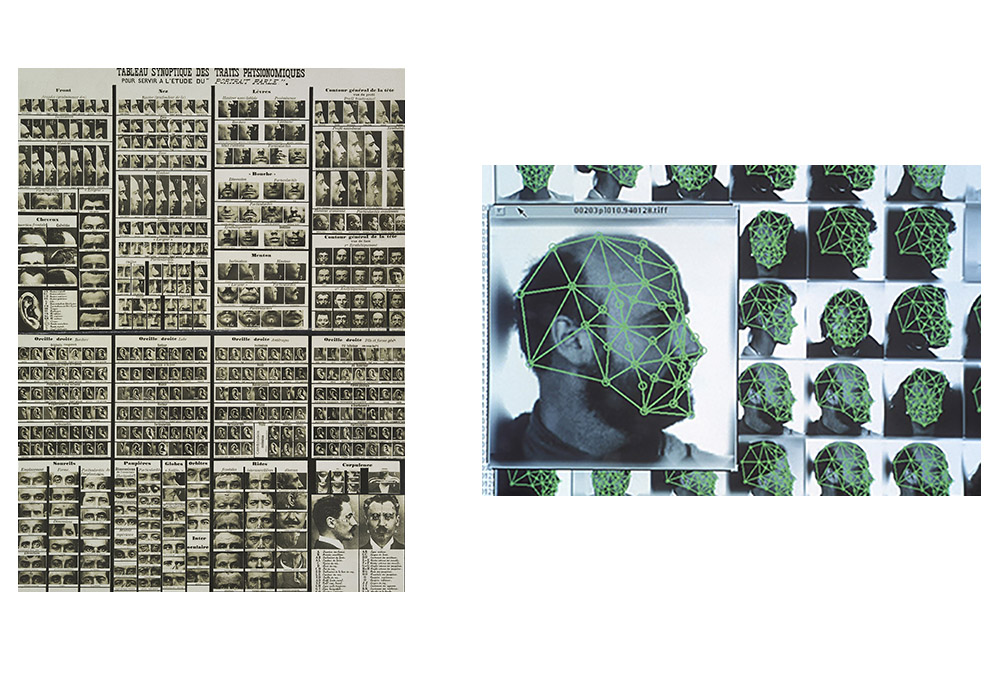
Seeing Science: Facial Recognition
In this highlight clip, Reading The Pictures Salon moderator Nate Stormer and panelists Corey Keller, Kurt Mutchler, Marvin Heiferman, Ben de la Cruz, explore two different images illustrating facial recognition. The original purpose of these photographs was to categorize facial features.
Watch NowDiptych: “Summary Chart of Physical Traits for the Study or the ‘Portrait Parlé’” (1909) with a selection of photos mapped with grid points by facial recognition software. Photo: LEFT Alphonse Bertillon, Courtesy the Metropolitan Museum of Art and RIGHT Steger photo/Getty Image
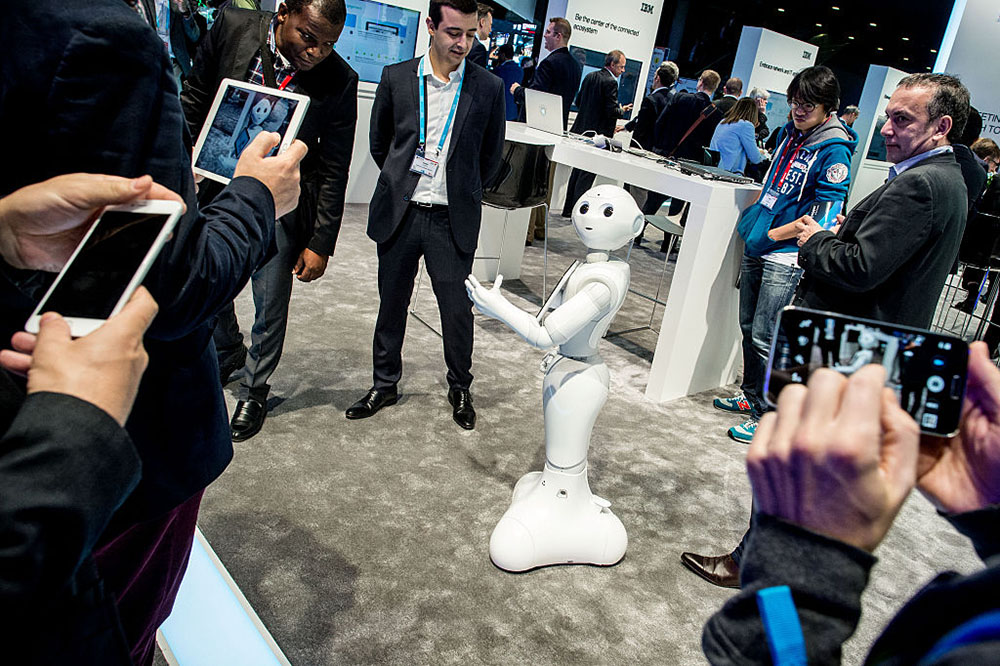
Seeing Science: Pepper the Robot
In this highlight clip, Reading The Pictures Salon moderator Nate Stormer and panelists Corey Keller, Rebecca Adelman, Max Mutchler and Kurt Mutchler, explore the issues surrounding the existence of robots being used in our everyday lives.
Watch NowVisitors attend a demonstration of a robot named ‘Pepper’ at the IBM stand on day 3 of the Mobile World Congress 2016 on February 24, 2016 in Barcelona, Spain. The annual Mobile World Congress hosts some of the world’s largest communications companies, with many unveiling their latest phones and wearables gadgets. Photo: David Ramos/Getty Images.
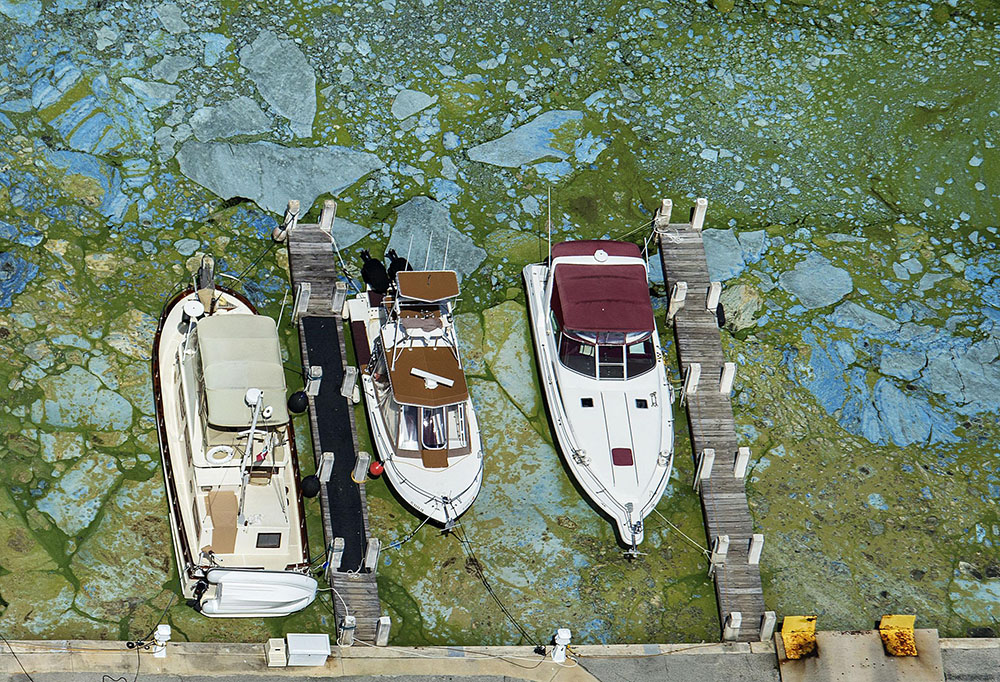
Seeing Science: Toxic Algae
In this highlight clip, Reading The Pictures Salon moderator Nate Stormer and panelists Corey Keller, Rebecca Adelman, Kurt Mutchler, Marvin Heiferman, Ben de la Cruz, discuss the environmental issues this photograph illustrates, and the off putting nature of seeing the toxicity.
Watch NowToxic algae bloom crisis hits Florida, drives away tourists. Photo: Greg Lovett/The Palm Beach Post/Associated Press.

Seeing Science: Zika
In this highlight clip, Reading The Pictures Salon moderator Nate Stormer and panelists Corey Keller, Ben de la Cruz, Rebecca Adelman, Max Mutchler, Kurt Mutchler, and Marvin Heiferman discuss the disconcerting nature of the composition of this photograph.
Watch NowJackeline, 26, holds her son who is 4-months old and born with microcephaly, in front of their house in Olinda, near Recife, Brazil, February 11, 2016. Photo: Nacho Doce/REUTERS.
The Full Edit
Take a closer look at some of the images from our larger photo edit.


CMS Detector: Compact Muon Solenoid Experiment is one of two large general-purpose particle physics detectors built on the Large Hadron Collider at CERN, Switzerland. The CMS detector is capable of studying many aspects of proton collisions. Photo: Enrico Sacchetti.
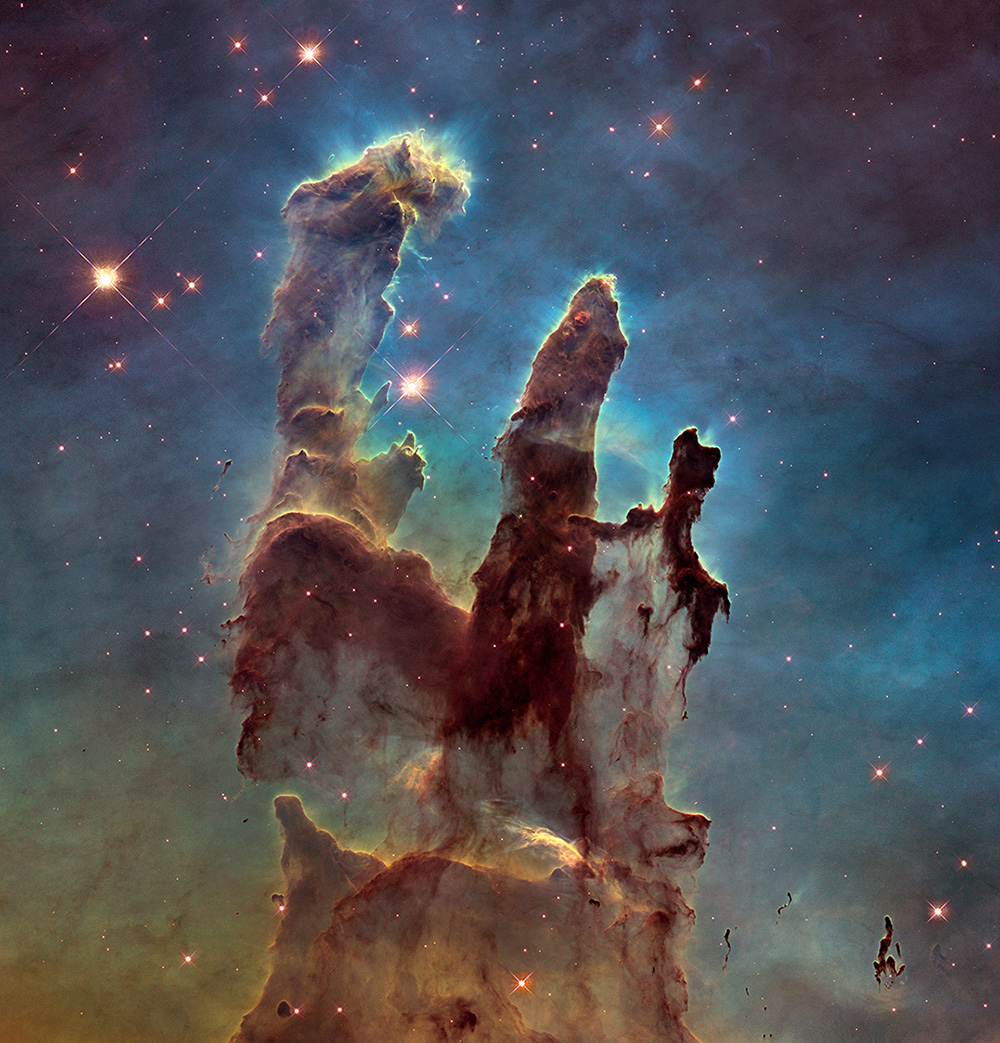

The NASA/ESA Hubble Space Telescope has revisited one of its most iconic and popular images: the Eagle Nebula’s Pillars of Creation. This image shows the pillars as seen in visible light, capturing the multi-coloured glow of gas clouds, wispy tendrils of dark cosmic dust, and the rust-coloured elephants’ trunks of the nebula’s famous pillars. The dust and gas in the pillars is seared by the intense radiation from young stars and eroded by strong winds from massive nearby stars. With these new images comes better contrast and a clearer view for astronomers to study how the structure of the pillars is changing over time. 2015. Photo: NASA, ESA/Hubble and the Hubble Heritage Team.


Many scientists believe that modifying human embryos in this way crosses an ethical line. Photo: Anne-Christine Poujoulat/AFP/Getty Images.


Four extraordinary women make up half of NASA’s most recent astronaut class—and they may go to Mars. Photo: Todd Spoth for The Houstonia.


Left: Summary Chart of Physical Traits for the Study or the ‘Portrait Parlé. Photo: Alphonse Bertillon. Courtesy the Metropolitan Museum of Art. (1909). Right: A selection of photos is mapped with grid points by facial recognition software. Photo: Steger photo/Getty Images.


Visitors attend a demonstration of a robot named ‘Pepper’ at the IBM stand on day 3 of the Mobile World Congress 2016 on February 24, 2016 in Barcelona, Spain. The annual Mobile World Congress hosts some of the world’s largest communications companies, with many unveiling their latest phones and wearables gadgets. Photo: David Ramos/Getty Images.


Toxic algae bloom crisis hits Florida, drives away tourists. Photo: Greg Lovett/The Palm Beach Post/Associated Press.


Jackeline, 26, holds her son who is 4-months old and born with microcephaly, in front of their house in Olinda, near Recife, Brazil, February 11, 2016. Photo: Nacho Doce/REUTERS.


US President Barack Obama reacts as 14-year-old Joey Hudy of Phoenix, Arizona, launches a marshmallow from Hudy’s ‘Extreme Marshmallow Cannon’ during a tour of the White House Science Fair in the State Dining Room of the White House in Washington, DC, February 7, 2012. Photo: Saul Loeb / AFP – Getty Images.
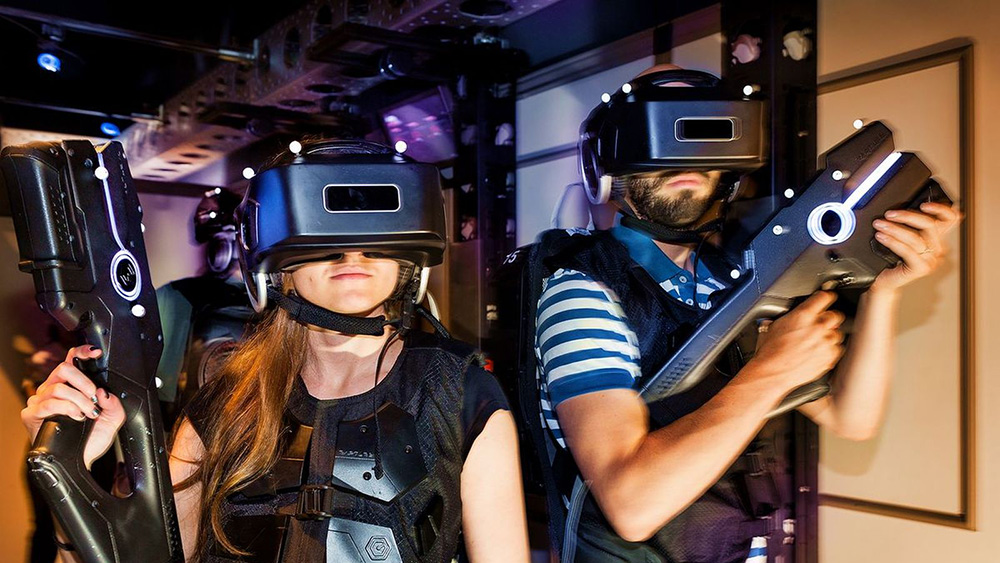

On July 1st, after months of running limited “beta testing,” The Void is opening its first public attraction: a Ghostbusters-themed experience in New York City’s Times Square, located inside the Madame Tussauds wax museum. For $50, visitors can strap on a VR headset and a backpack computer fashioned into a Ghostbusters proton pack, pick up a matching gun-shaped plastic prop, and act out a cinematic fantasy in real life. Photo: James Bareham for The Verge.
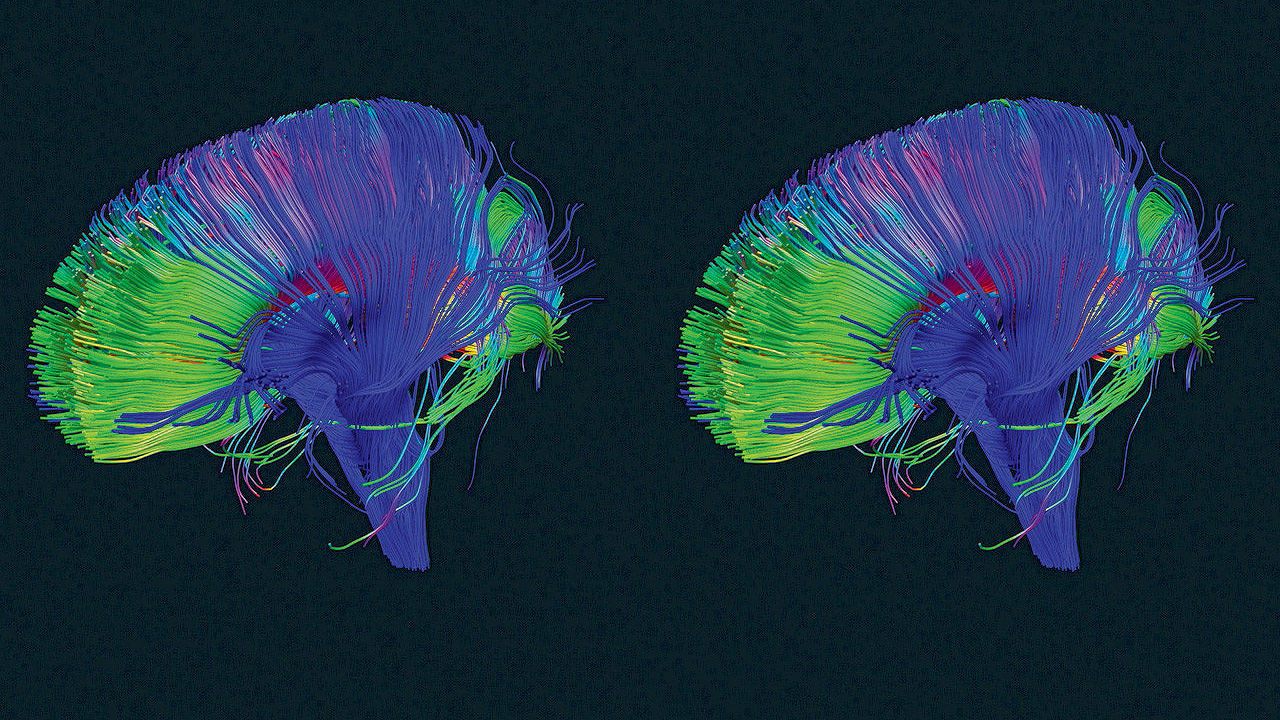

Caption: Imagine your brain is a garden, except instead of growing flowers, fruits, and vegetables, you grow synaptic connections between neurons. These are the connections that neurotransmitters like dopamine, seratonin, and others travel across. Photo: NICHD/P. Basser
Lighting up the brain. Of all the organs of the body, the brain has possibly proved most opaque to science. But that is rapidly changing. Brain imaging is one of the hottest areas of biology, indeed in all of science imaging, right now. This is in part due to a technique called optogenetics, which allows scientists to control genetically-modified neurons using pulses of light. Coupled with a technique that renders the fatty tissue of the brain transparent, we can now look deeper into the brain than ever. Visualizing neural networks using these techniques will undoubtedly be a key part of the coming breakthroughs that may finally advance our understanding of the brain. Whether we have to confront nascent fears about mind control, or seeing deep into the “soul” or spirit, remains to be seen. -Edward Brydon


Caption: Kokoro Co. humanoid robot in Tokyo. Photo: Tomohiro Ohsumi/Bloomberg
The hair looks a bit too fake, wig-like. The skin a little too hard and pale. At first glance it could be a mannequin. It is actually a prototype robot. At some point in the future humanoid robots, androids, may walk among us. If they do, designers are going to have to work hard to help these inhabitants of the Uncanny Valley blend in, trying to get people have have affection for them or an emotional attachment. All design is after all a sort of seduction. Or will the designers embrace their mechanical difference to humans and accentuate it? Whichever route they take is going to depend on how comfortable people are with the robots, whether they trust them, and, ultimately, which sells best. Are you ready for Blade Runner IRL? -Edward Brydon
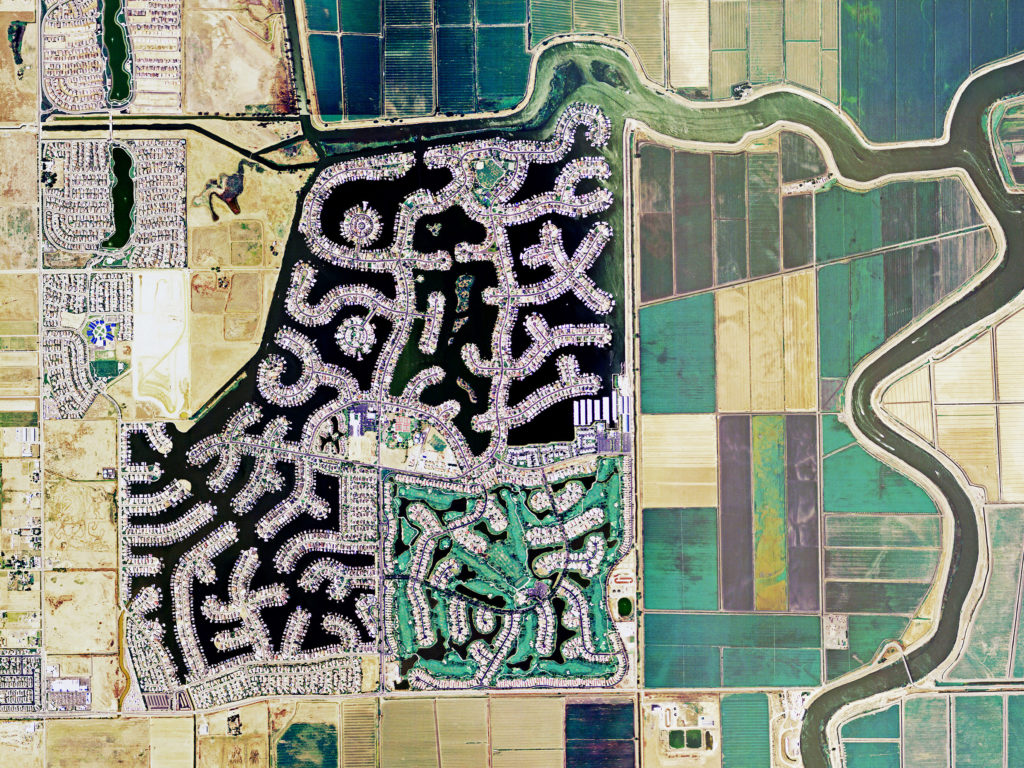

Caption: Discovery Bay, California. Photo: Alamy
Aerial photography allows a top down view, a different, grander scale, that brings the land below into sharp relief. We can see from above what we cannot see with a pair eyes mere feet above the ground. The classic example being the Nasca Lines drawn into the desert in Peru. These days aerial photography is more synonymous with observation, especially covert or overt ops of the military or police force. But farmers and firefighters use it, to name but two other groups, as do scientists of course. This ubiquity is all thanks thanks to the easy availability of drones. That kind of monitoring from above is put to use scientifically to see how the land is shaped by natural and human forces. Here a housing development and marina sticks out from the earthen land surrounding it like an oasis. It is Discovery Bay in California. Far east of the Pacific ocean at the top of California’s central valley it takes the water for its marinas and pleasure boating from the Old River, which flows into the San Joaquin River, and eventually San Francisco Bay. However, California’s water is in strict control after several years of severe drought. The photo hints at how human development and desire has created demands for water beyond the means of with the land and the cycle of nature. -Edward Brydon
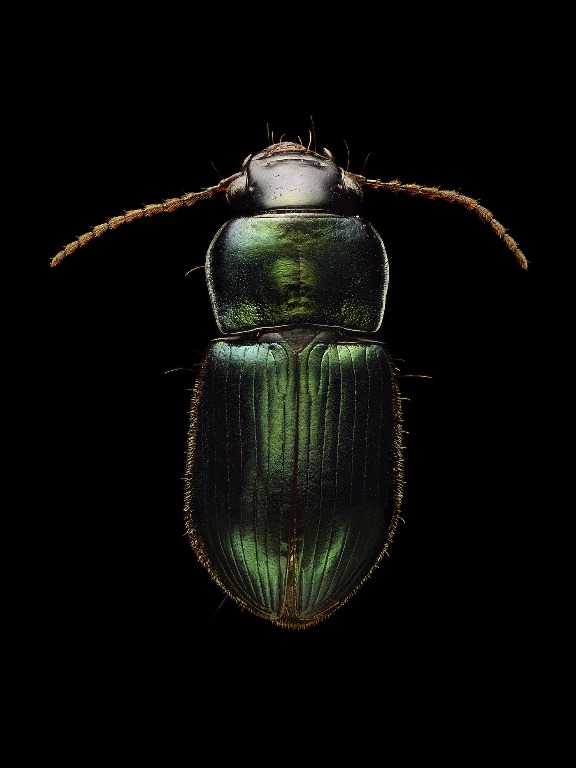

Caption: “Ground Beetle,” from “Microsculpture” (2016) Photo: Leon Bliss
How would you react to a 3 foot-long beetle, or ten-foot long mantis fly? Shock and horror, or wonder and amazement? These photographs take things that many might ordinarily have no qualms about squishing under their shoe and turn them into giant, monumental images that resemble photographs of the finest, iridescent sculpture. The technique used to photograph them was as exacting as a sculptors chisel. Each body part was photographed individually, with a particular lighting set-up for an antenna being different to that of a mandible. The microscopic lens used had such a shallow depth of field that the camera was moved on a programmed rail that advanced by only ten microns each time, less than the width of a human hair. This technique produced a composite image of 8,000 photographs that scaled the insects from their normal size to up to ten feet in length. The colors are rich and vibrant, jewel-like, and each individual hair can be seen in complete clarity. On seeing these photographs it is no surprise that ancient cultures like the Egyptians venerated the Scarab and dung beetles. -Edward Brydon
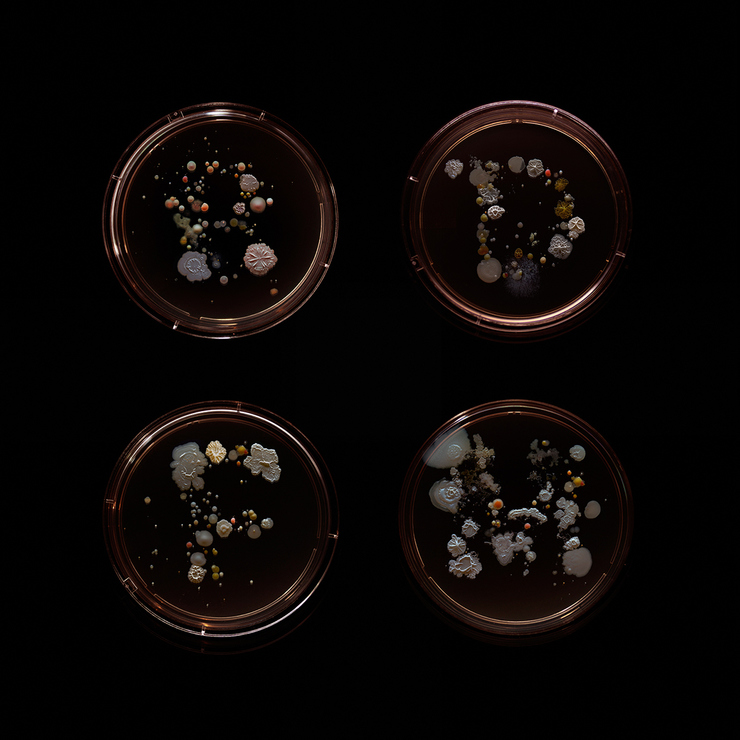

Caption: Typographer and illustrator Craig Ward heard an urban legend that “using the handrails on the subway is like shaking hands with 100 people.” He decided to test that theory by sampling the bacteria on subway lines around New York City and photographing his findings. Photo: Craig Ward
Mind the microbes. Every surface in the world is colonized by tiny organisms that we cannot see with the naked eye. Yet there are ways of being able to visualize them. One is to grow them on a food source, known as an agar plate, in the lab. The florid patterns of these microbes grown from surfaces on the subway in NYC that straphangers are most likely to touch are rendered beautifully. The patterns have the essence of others we see in nature. However, when the source of the microbes is revealed, the germaphobic “eeewww” factor comes into play and the fear of the unknown and unseen rises. The opposite of “the more you know, the less you fear.” How many more commuters now carry antimicrobial lotion on them? We tend to have a revulsion to microbes as they are mostly thought of as sickening germs. But it is unwise to lump them all together. We live with the vast majority of microbes without negative effect, and in fact depend on many for our own life, having developed a symbiotic relationship with many of the bacterial species that live on and inside us. – Edward Brydon
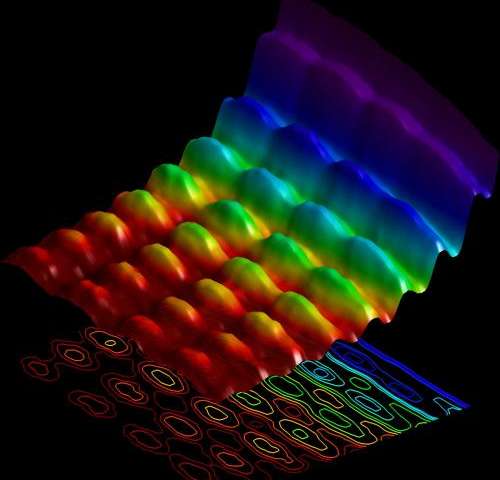

Caption: Light behaves both as a particle and as a wave. Since the days of Einstein, scientists have been trying to directly observe both of these aspects of light at the same time. Now, scientists at EPFL have succeeded in capturing the first-ever snapshot of this dual behavior. Photo: Fabrizio Carbone/École polytechnique fédérale de Lausanne
There are multiple paradoxes involved when attempting to photograph light. Light is both a particle and a wave. It is also the very thing that photography depends upon, after all it is in the name: photo = light, graphics = writing. So how can one photograph light? By pulsing a laser at a metallic nanowire and using the electrons to image light via an ultrafast electron microscope. A technique with a clever twist to show light in a whole new way, as both a particle and a wave simultaneously, for the first time. Photography has been involved in other physics “firsts,” such as when a photograph of a total eclipse showed the light of stars bending, helping prove Einstein’s theory of relativity. Science photography so often reveals things we have never seen before, fostering discourse and prompting new experiments designed to probe further. Being able to image and control quantum phenomena like light could lead to breakthroughs in quantum mechanics and computing. – Edward Brydon
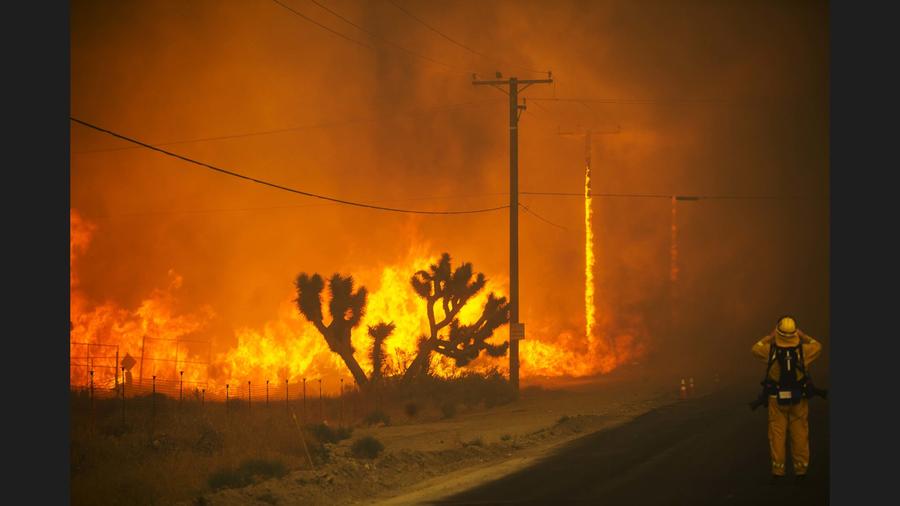

Caption: A firefighter watches as the Blue Cut Fire roars near Highway 138 as it burns vegetation and power poles in Phelan, California. Photo: Gina Ferazzi / Los Angeles Times
We might not think of this as a science image, but to suppress wildfires, firefighters (also known as hotshots), use ecology, geography, climatology, and other sciences, even psychology so they can investigate the question of how it was started and by whom. This image leaves behind data-driven imagery or literal images of science being done. This is elemental. Filling the frame with fire, all angry reds and dark smoke, the image is hot and suffocating. But it’s what was taken at a distance that might make viewers feel safe enough from the heat. Those with wildfire experience would likely be running in the opposite direction though, unlike the firefighter observing the fire in the middle distance on the right. Even though the photographer has placed them on the edge of the frame, it is that person’s job to get close, to understand the fire, to help direct the efforts to suppress it. The framing also suggests the fire has room to spread to the right. How much room it has is determined by any combustible materials and the weather patterns.- Edward Brydon
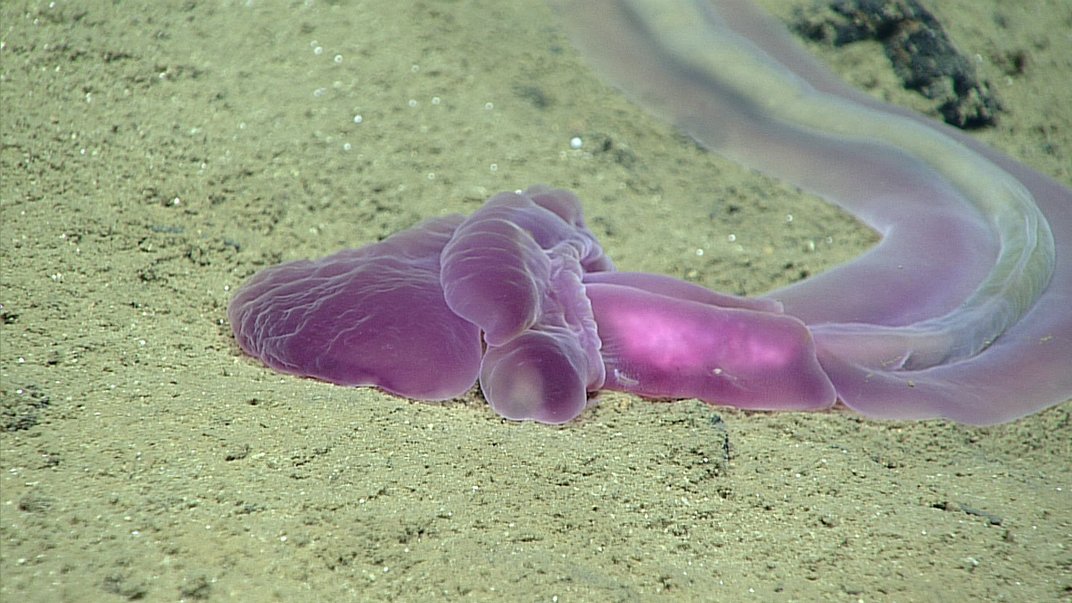

Caption: An acorn worm observed at a dive spot called Twin peaks. Photo: NOAA
There’s some really weird and beautiful stuff down in the depths. Maybe those old mariners tales and sea shanties weren’t so far off the truth after all. These creatures are elusive. The ocean is still largely unexplored due to the pressures and light issues at depth. But technology is changing that. We are getting further down into the oceans, seeing and understanding more about them each year. We only know roughly a tenth of all the life in the oceans, though 1,500 new species of life were identified last year alone. Many of them boggle the mind because they have adaptations that we mammals living on land cannot apply to ourselves. That’s what makes life under the sea so fascinating, despite the initial fear or gross out. Maps used to be festooned with fantastical creatures under the waves–“Here be monsters.” Maybe it should now be “Here be the weird and wonderful?”- Edward Brydon
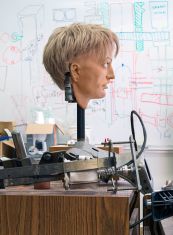

German artist Thomas Struth photographed this robotic head, at the NASA Jet Propulsion Laboratory, in Pasadena, California. Photo: Thomas Struth
The disembodied head on a spike is startling, like a scene from a biblical Renaissance painting. It has other connotations with terror these days too. Removing the head is to remove the face, the main source of identity, consciousness, the soul. And yet this almost paradoxically humanizes the robot in the picture. We don’t want that to happen to something human, or human-like. Another view could be more benign, of a puppet awaiting the hand that moves it. As the eye moves to the tools on the bench and the drawings behind the head, it becomes more clear that this is not puppetry, but science, and the puppeteers are robotic engineers. This particular model has been developed with polymer parts that mimic the movement of real muscles. Will these scientists eventually produce such good mimicry as to overcome that uneasy “Uncanny Valley” feeling? And will the hand maintain control of the puppet?- Edward Brydon
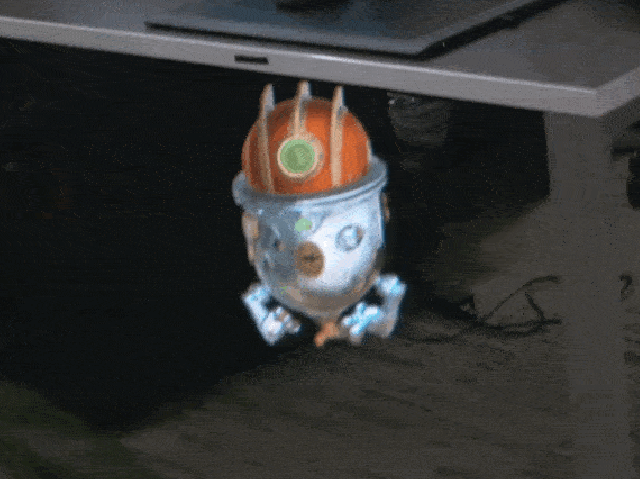

Photo: Magic Leap
You wouldn’t see the little bot under the table without special eyewear. It’s not real. Well, it’s not in your reality. The difference between what is real and what is a new reality is being redefined as software companies race to be the first to integrate widespread “upgrades” to our reality. There are three main ways this is being done; virtual reality (complete, software built worlds), augmented reality (data overlaid everyday with the world around you) and mixed reality (where the physical world mixes a virtual one). Magic Leap, the tech that generated this little bot, works as mixed reality–it mixes software generated characters and objects with the real world, so a software ball bounces off real world objects like a real ball would but can only be seen using the eyewear. But the company is very secretive about the software and how it integrates into a new lens specially designed to track where the eye is focusing. We have to wait and see how successful it will be when finally released. Many believe that this mixing of reality, along with body hacking, is a next step towards the singularity, a time when humans and tech are completely integrated.- Edward Brydon
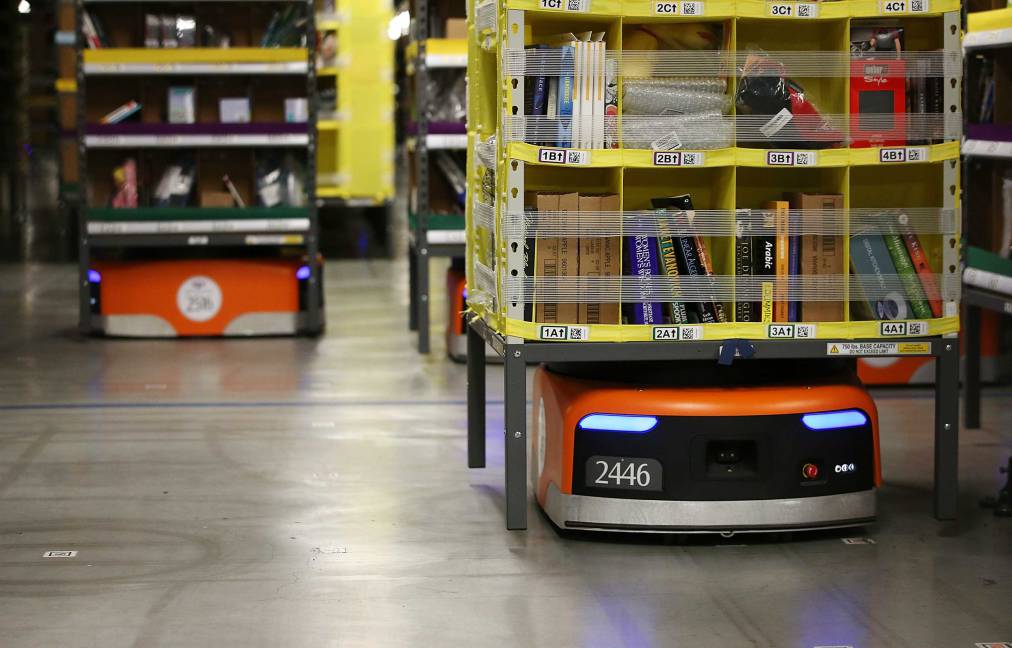

Video still via TIME
Robots are transforming business. If self-driving cars on the roads are the buzz, what about on the warehouse floor? These Roomba-like robots, made by Kivas Systems, are scooting all over Amazon’s warehouses, lifting and moving your shopping orders. Number labels and barcodes help verify the order, while floor mounted bar codes provide the signals for the robots’ navigation system. Another sensor prevents each robot from colliding with another. It turns out Jeff Bezos wasn’t kidding when he signaled Amazon’s tech revolution by announcing drone deliveries on “60 minutes” in February 2014. That announcement came just five months before these robots began working at Amazon, so it’s likely all these robotic options for picking, loading and delivery were being explored at the same time. While the Kivas have apparently been helpful alleviating some of the demanding shifts for workers at Amazon’s warehouses, it still begs the question: what jobs will be left for people?- Edward Brydon Photo:
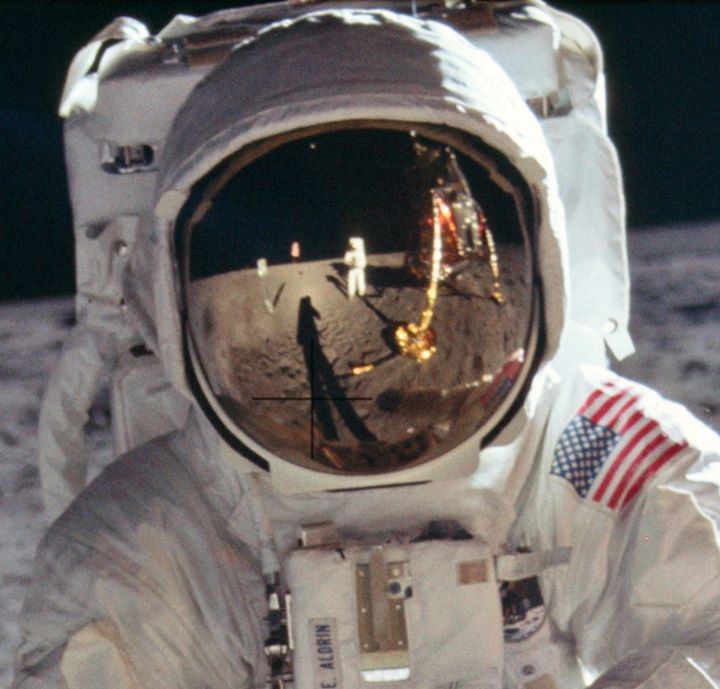

Caption: Apollo astronauts on lunar mission. Photo: NASA
The ultimate selfie, at the ultimate reachable destination. It’s a truly memorable photo, one of the few released after the first moon landing, and now among thousands more released by NASA from those missions. Seeing someone reflecting a lunar landscape, their colleagues and the tinfoil ship that steered them to this dusty gray rock in the blackness of space, how can it not inspire jaw-dropping wonder? But it is also a photo poured over and analyzed by conspiracy theorists convinced that it was staged. Therein lies the nugget: what in photography is truth? Conspiracy theories and the search for truth goes back to the day photography was invented. It has been manipulated in various ways ever since, to the point that many people are reluctant to believe what they see in a photograph. Photography is widely used in science as one of the tools used to display the results of an experiment — where tampering with an image so it fits the intended income is often immediate grounds for retraction of the paper. It is also being much more widely used for public communications. The more photos you see, the better sense of the scientific story you get, both in the actual experiments and the life of discovery. There will always be doubters, especially when images show things we cannot expect to see without the required training or tools. Still, transparency in method and use is essential to earn public trust in scientists and the scientific process. That reflection in Buzz Aldrin’s visor is also a reflection on us, on our need to access the information in the photograph, to find the truth in it.- Edward Brydon


Caption: Lynx on the shore of Loon Lake, near Lake Wanapitei, Ontario, Canada, July 1902. Photo: George Shiras/National Geographic
“Hunting” animals using a camera and flash might be older than you think. After all, humans have always been curious about the unseen animal kingdom. What do they get up to at night? Where do the diurnal ones go, and conversely what nocturnal animals come out, when the sun goes down? We want to see what’s making those noises. That natural curiosity is part of science, it drives us to find a way to investigate. Camera traps might feel like a relatively new invention, driven by the boom in nature programming on television and requiring relatively sophisticated technology to pull off. It turns out they are nearly as old as photography itself. George Shiras began photographing in the late 1800’s and had constructed elaborate wire-triggered cameras to perfect his nighttime flash photography by 1893, producing stunning wildlife photography. The experimental nature of the cameras he put together and the type of photography he chose are very much in the spirit of science. The eerie portraits that resulted from his efforts speak to our fears of what is out there at night, but also reveal the animals in their world.- Edward Brydon


Caption: Anti-Abortion Protesters Use Graphic Images From U.S. Video still via NBC News
A lone woman lingers outside a medical practice, possibly waiting to hand out leaflets. It seems like a relatively peaceful scene, but judging by the poster looming in the foreground it is the calm before the storm–a small part of the battleground in the fight between pro-choice and anti-abortion activists, and the women and medical staff caught between them. The sign portends imagery so graphic, it cannot be shown directly. Viewers have to want to see it, to use the QR to click through to it. Even without seeing the images, this still shows how scientific and medical imagery can be co-opted for use and become politically charged.- Edward Brydon


Women scientists are shattering glass ceilings and, in Kate Rubins’ case, rocketing through the atmosphere to orbit the earth. There have been other women astronauts, from Sally Ride, through Mae Jemison, and now Kate Rubins. Indeed there are, and have been, many women scientists in all the different disciplines. They have had to fight for the same recognition and rights as men, and are still doing so now. As a virologist who has worked with some of the world’s most dangerous pathogens, such as Ebola virus, Dr. Rubins is no stranger to cramped environments and heavy protective suits – though a rocket capsule and the ISS are very different to biosafety clothing and quarantine conditions. In this photograph, her face seems set in a mode of quiet concentration and resolution. But the enclosed, almost claustrophobic nature of the photograph echoes the isolation many women scientists feel, hemmed in by their institutions. As an astronaut, her rocket fought against gravity to get to the ISS, and women are still working to free themselves from the gravity that they work in fields still heavily weighted towards the success of men. Dr. Rubins’ reclined pose and relaxed countenance shows she’s ready for the task at hand.- Edward Brydon
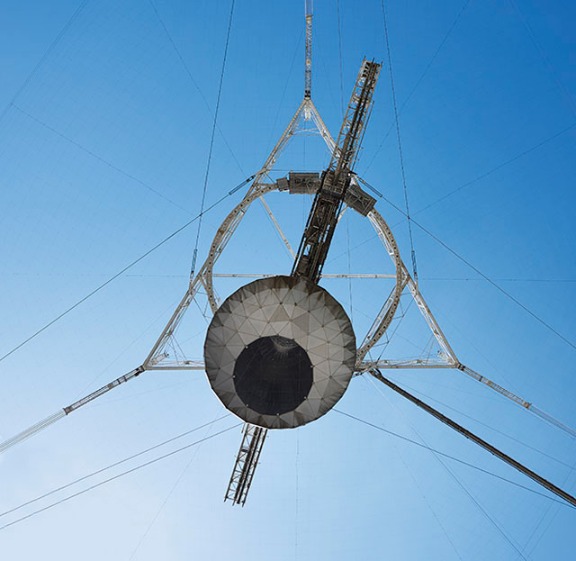

An “eyeball” at the William Gordon Radio Telescope in Arecibo, Puerto Rico. Humans have always gazed up at the stars. Though there are no stars in this image, the clear blue sky acts like a plain backdrop, bringing the structure of the telescope into relief. Dangling in front of a triangle, and with its eyeball-like appearance–the white of the sclera and black of a wide open iris–it resembles the “all seeing eye” extended, reaching out and visually grasping for something. A metaphor for the largest radio telescope in the world, one dedicated to the search for extraterrestrial life. But the orientation of the “eyeball” directed back towards the viewer raises the prospect that gazing at the stars risks a gaze returned. Who is watching us while we look for them? That also speaks to the question: why do we need to look for something, or someone, out “there?” What does that search say about ourselves, our state of self-awareness or introspection?- Edward Brydon
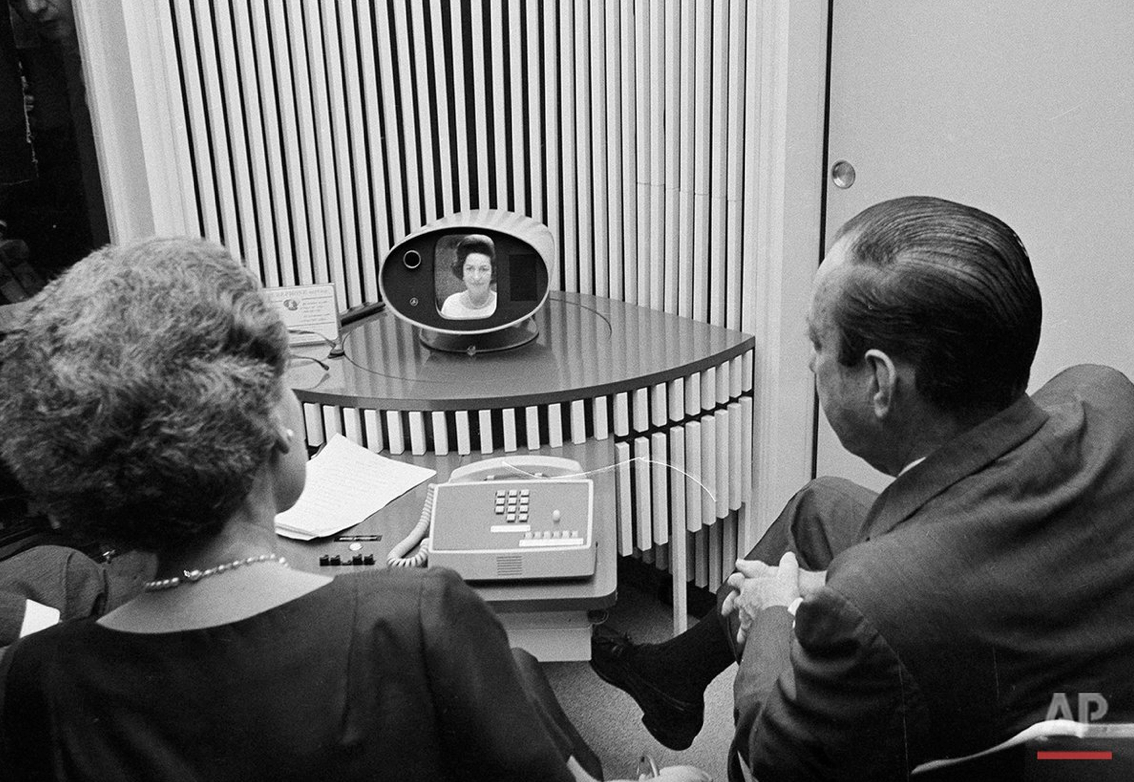

Photo: AT&T Archives and History Center via AP
In the inaugural call of the Picturephone booth service, Illinois Bell Telephone President John de Butts in Chicago talks to First Lady Lady Bird Johnson in Washington. That’s the drama of new tech being released for the first time. When AT&T Bell Telephone put this on display at the New York World’s Fair in 1964, it was a major hit.- Edward Brydon
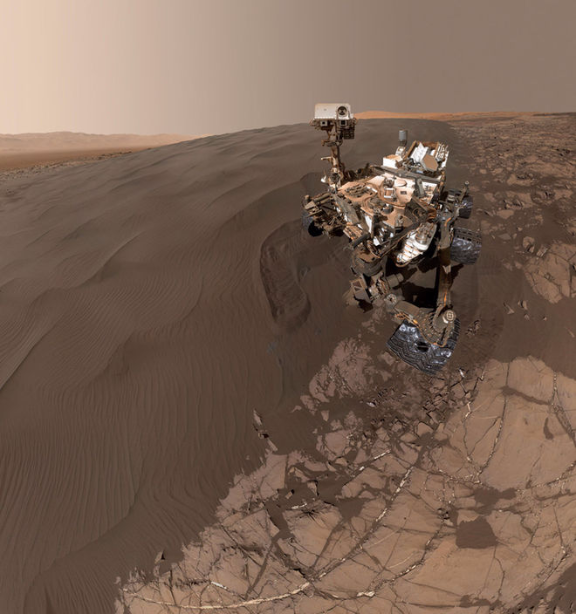

The ultimate selfie-taking machine. It might seem like the action of a tourist but it is really just a very enthusiastic science robot, excited about where it is and what it is doing. Of course a robot it can’t have those emotions, but the drivers and scientists operating it are aware of the powerful social currency of photographs and of a public intoxicated with selfies, documenting that they were there–wherever “there” might be. These photos add some levity to the stream, which otherwise has images of the barren, dusty Mars landscape. There’s also the tension of waiting for the pictures to come in, for our little robot buddy up there to “phone home” and let us know it is ok. Who knows, those selfies may even have got more people interested in planetary science.- Edward Brydon
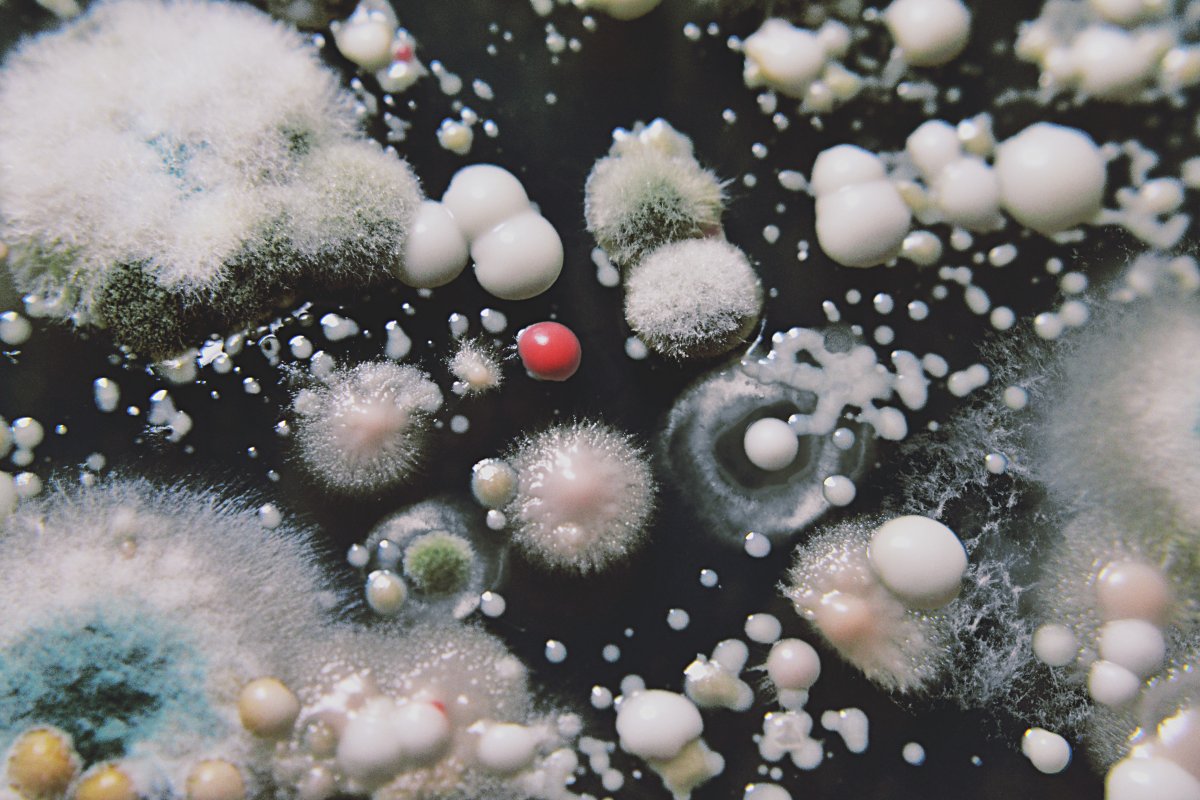

Caption: Microbes taken from the photographer’s family’s fingertips. The photo project attempted to portray family in a unique way over the course of 3 weeks as the microbes cultivated. Photo: Sofia Vini
Have you washed your hands? These cute, soapy-looking blobs are the microbes taken from a family’s fingertips. The world under the microscope is full of wonder, and because that world is so strange to us visually we are often compelled to stop and look when we see images of it. Beauty enthralls us, but it is also the “wow factor,” or maybe even the double-take: “what the hell is that?” As smartphones become more capable, and people make adapters that allow anyone to peer the macro and micro world, images like this are becoming more commonplace. It is no longer the realm of the dedicated scientist with an expensive precision tool like even a basic microscope. Curiosity about the world around us is unlocked–the ranks of citizen scientists are growing.- Edward Brydon
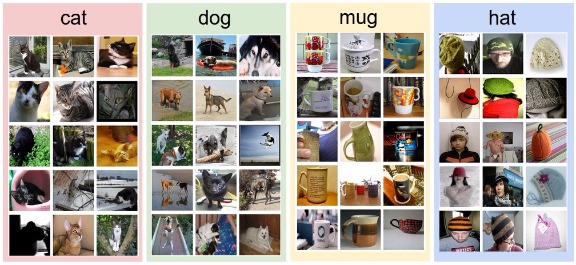

Caption: An example training set for four visual categories. In practice we may have thousands of categories and hundreds of thousands of images for each category. Photo: CIFAR-10 dataset
How do you teach computers to think, to see? Using massive visual datasets that cover every possibility. This allows a computer to break down what is in front of it into code. It assigns probabilities on different parts of the image to assess the likelihood of it being one thing over another; 82% cat vs 15% dog, for example. This is an extension of the familiar facial recognition software that has advanced beyond recognizing a human face to now distinguishing between individual people.As AI and machine learning impact this process computers can churn through the visual data. Data such as different lighting conditions, highlights, shadows, contrast, edges, contours, scale, viewpoint, distortion, occlusion, and many other variables. In the end the computer is still making an assumption and assigning a probability to the object, but one that is built on massive amounts of data. What’s the probability they’ll get it wrong, assuming that probability diminishes the more data they are fed? And what are the implications of a wrong recognition based on these probabilities?- Edward Brydon




Caption: An illustration of drug-resistant Neisseria gonorrhoeae, which causes gonorrhea. Photo: James Archer/CDC
Pretty, deadly things. Everything about this picture points to something menacing: the objects floating sinisterly through what seems like the blackness of space; the long spikes projecting from them. They are the bacteria that cause gonorrhea, a threat microbiologists familiar with Neiserria gonorrheae are well aware of. Some strains are now resistant to all known antibiotics, a circumstance referred to as total drug resistance (TDR). This picture introduces us to our deadly enemy. Electron microscopes can capture more detail, but it’s this kind of image that captures the public attention. It’s scary on purpose.- Edward Brydon
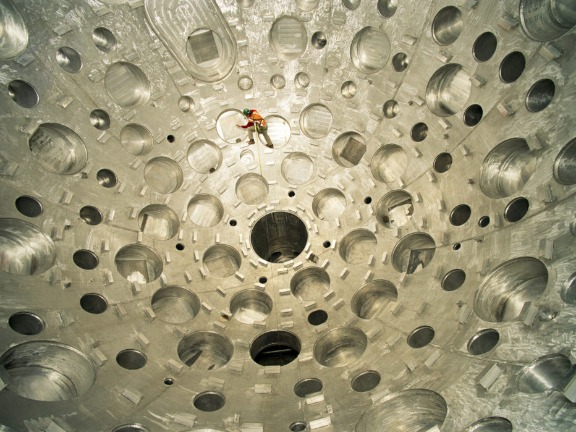

Photo: Getty
Igniting inquiry. A scientist inspects a target chamber at the National Ignition Facility (NIF) at the @Livermore_Lab. But it could almost just as well be an astronaut inspecting his vehicle or the space station. We are immediately brought into the evocative realm of pop culture sci-fi by this image. The image has film-like qualities that make you think of 2001: A Space Odyssey, but also of the tech and grandeur of newer movies like Interstellar. The scale in the image has an isolating effect, and isolation brings fear. After all, you wouldn’t want to be caught inside a chamber that uses lasers to fuse atoms of hydrogen together when it is turned on. Those lasers essentially help create conditions that exist in the core of stars. Whether the NIF makes it makes the goal of ignition, a fusion burn that is capable of sustaining itself and creating more energy than was used to start the reaction, remains to be seen. But if it does, the dreams of the spacecraft-powering fusion drive will be revived in sci-fi fans and scientists alike.- Edward Brydon
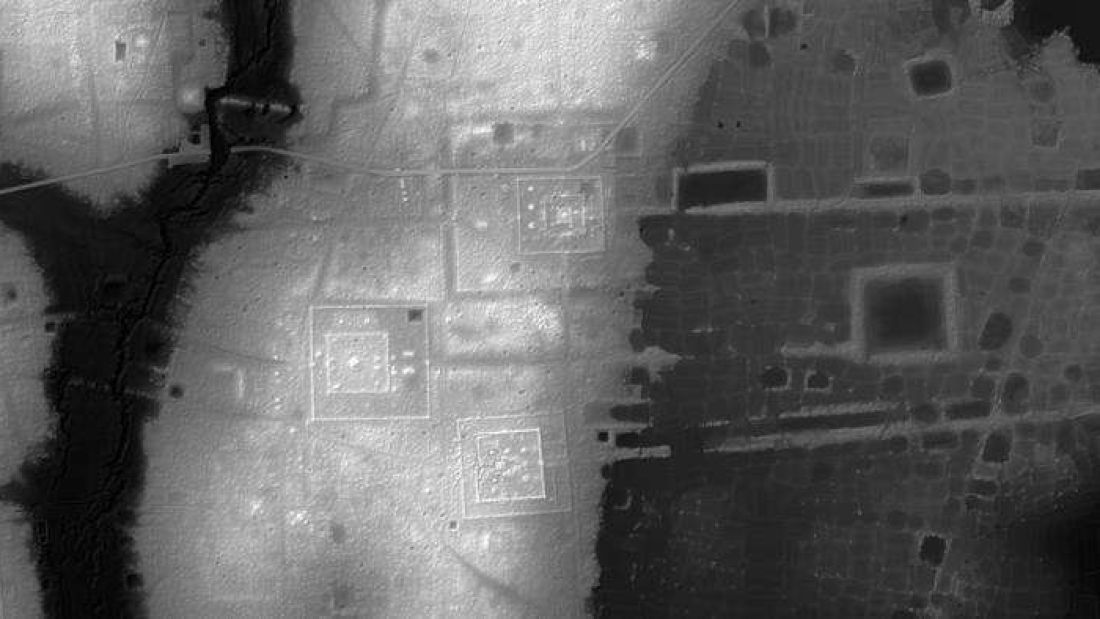

Caption: The area around Siem Reap, not far from the famous temple complex of Angkor Wat in the heartlands of the ancient Khmer culture. Photo: Damian Evans/Cambodian Archaeological Lidar Initiative
Looking down at it, it is hard to even image that anything could be under a dense canopy of jungle. But a technology called LIDAR (Light Detection and Ranging), first developed to help map the surface of the moon, is bringing historical settlements and cities to light. Much advanced technology like this that is designed for use in space or the military eventually finds other uses in research or daily life. Where previously the archaeologist and team hacking through jungle might have missed important clues, dismissing mounds and geological topography of the land, LIDAR gives a top-down, bird’s-eye view that reveals the structures that the vegetation has hidden. Using pulses of light directed straight down from an aircraft, the detector reads the light reflected and builds a computer-generated image of the terrain below. We are again seeing things that the naked eye cannot make out, but this time we can see into the past — our past.- Edward Brydon
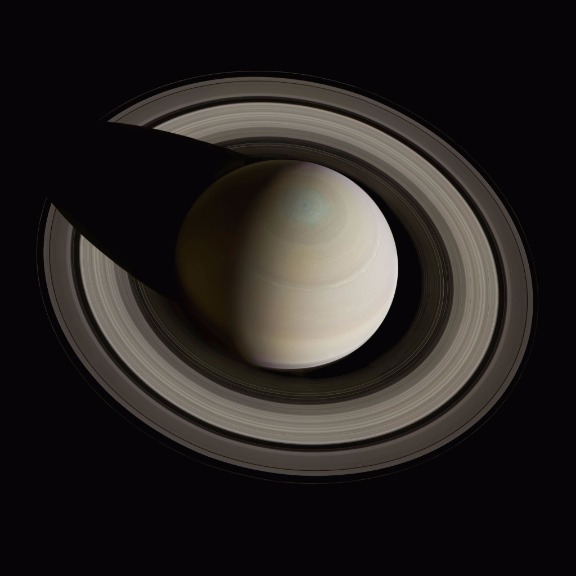

Caption: A photo of Saturn, using 36 images shot through red, green, and blue filters. Cassini, October 10, 2013. Photo: NASA/JPL/SSI/Cornell/Michael Benson, Kinetikon Pictures
A striking, almost perfect sphere, surrounded by smooth rings of different tones. The planet Saturn is instantly recognizable. It is almost playful, like a spinning top. As the largest and best known planet with rings, it has an intrinsic difference to earth and the other un-ringed planets that makes it interesting, in the same way anything strange or alien to a person or culture becomes fascinating. Photographs from space like this may be becoming more common. Because of their literal otherworldliness, they have an ability to create wonder in the viewer.- Edward Brydon
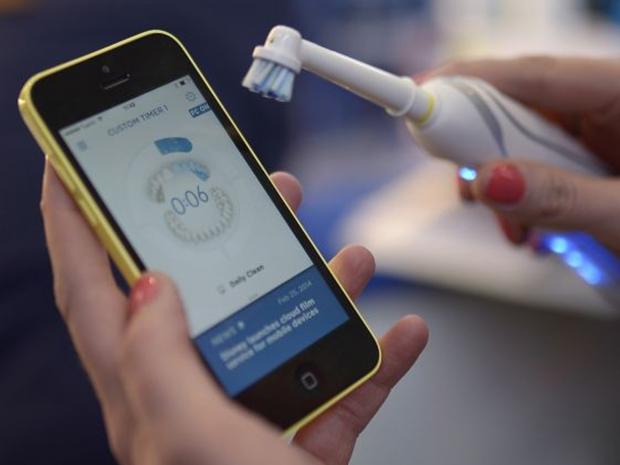

Caption: A mobile-connected toothbrush on show in Barcelona. Photo: AP
The internet of things is now all around us. We are bathed in the data signals of all these things communicating with each other. Even the mundane is being made exciting by it, and the pictures try to reflect that. Take this toothbrush, for example. It is just a picture of a toothbrush and a phone, not really that interesting, except for the fact you can see the diagram of the teeth on the phone. Apparently, with this mobile app and the connected toothbrush the user can see just how much of their teeth they have actually cleaned. Apps, not keys, control cars; apps turn lights on or off depending on your proximity. Your heating system senses when you are home, and learns how you like to adjust the temperature. These all have a seemingly benign nature, helpful tech to make life easier. The pictures are designed to make us feel comfortable with the idea of all the helpful apps, tools and appliances interacting. Nothing to see here except something you really should try, and buy, and there’s more coming too! But what lies beneath? Data collection on habits, needs, and the resulting targeting advertisements. And what if someone hacks your system? Will you be able to drive your car or get into your home? Will you freeze during winter if your thermostat is hacked? We’re going to need a lot better cyber security than some of those baby cam monitors have.- Edward Brydon
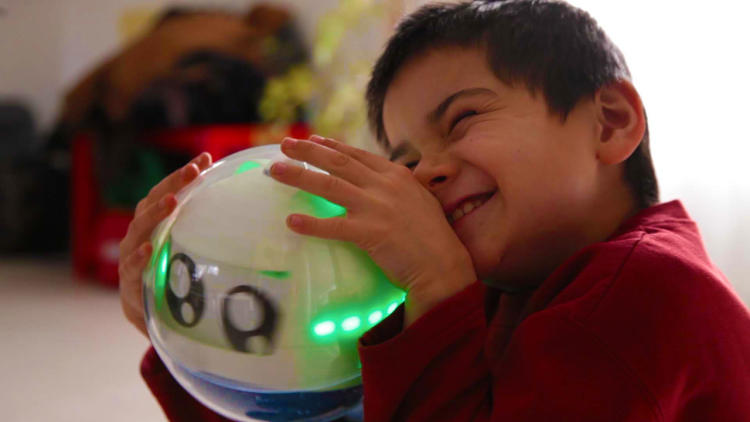

Caption: A robot may be the perfect companion to help autistic children develop social skills. Photo: Leka
The child in this photo is clearly finding fun and joy in interacting with the ball-like robot in hand. It seems that a lot of psychology has gone into the design of this robot, to make it as accessible, safe, open and friendly as possible. The ball-like shape has no angles, no hard edges to bump, bruise or cut. The eyes are wide and have a friendly countenance. The colors of the lights are a calming mixture of blues and greens. Balls also have a universal appeal–they are associated with the fun and games of youth. Once we know the function of the robot to help autistic children learn social skills, these design elements make sense. The photo shows us how the science of robotics can be used to help social and cognitive development, developing a hybrid between toy, friend and therapist. More of these hybrids will appear across all sectors of society as we integrate robotics into daily life. The photo makes us feel this is a successful, and emotionally rewarding, interaction. Hopefully that is true and long-lasting for the children.- Edward Brydon


Caption: Still from the film, “Minority Report”. Photo: via WIRED
The Steven Spielberg movie, “Minority Report,” based on a Phillip K. Dick novel, is more than ten-years-old, but much of the technology imagined in it exists now. Take the gestural interface shown in the film still. Just like Tom Cruise’s character, we are used to pinching and swiping to command our devices. So far though, the majority of that kind of gestural interaction takes place on a surface, such as a phone or tablet. But 3D gestural interfaces, with movement commands in the air, are well on their way to public roll-out. Microsoft’s Kinect is just one such system. Even though it is science fiction, it contains ideas and technologies that may come to fruition. Much of what seems imaginary or impossible is actually being worked on right at this second, and it just take economy of scale and cost to bring it to the public.- Edward Brydon
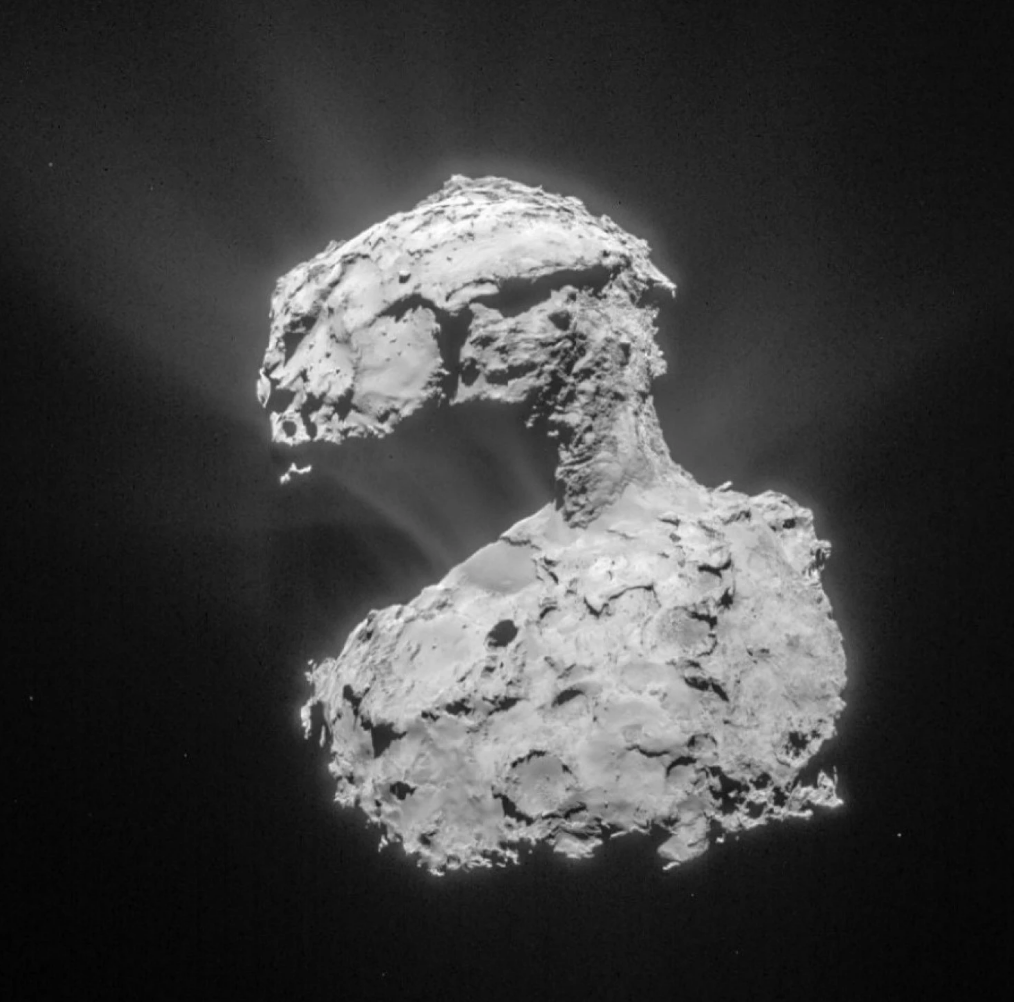

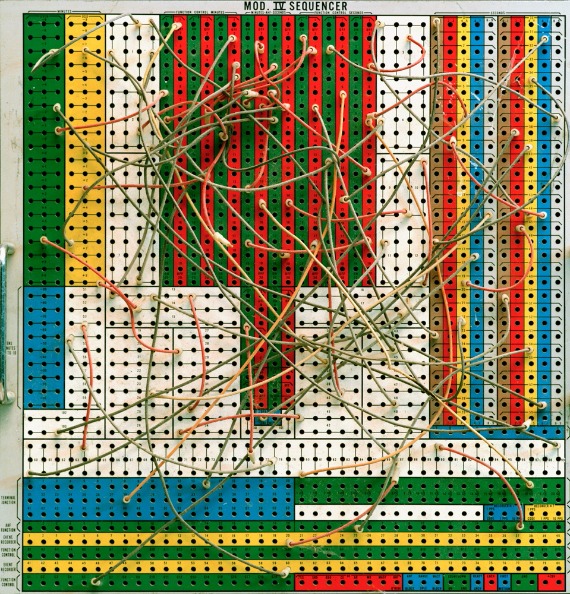

Caption: Located at Redstone Launch Complex 26 Blockhouse, Cape Canaveral Air Force Station, Florida; photographed in 2000; from the book “Abandon in Place.” Photo: Roland Miller
At first glance it looks like some sort of toy or game, a peg board that a child might use for learning and playing. It looks old though, obsolete, not sophisticated enough in construction for a child’s toy of today. But on closer inspection the words at the top and the patterns don’t jive with that, it must be something else. It is indeed old, a circuit board from the launch complex of the abandoned space program facilities at Cape Canaveral, Florida. It is amazing to think of the rudimentary technology used to get people into space and to the moon, and how much like those things seem like sets from an old movie compared to today’s shiny, ultrafast computers and tech. The photograph plays on our fascination with the old, the ruined, the out of date, the detritus of past scientific endeavors, and the related nostalgia.- Edward Brydon
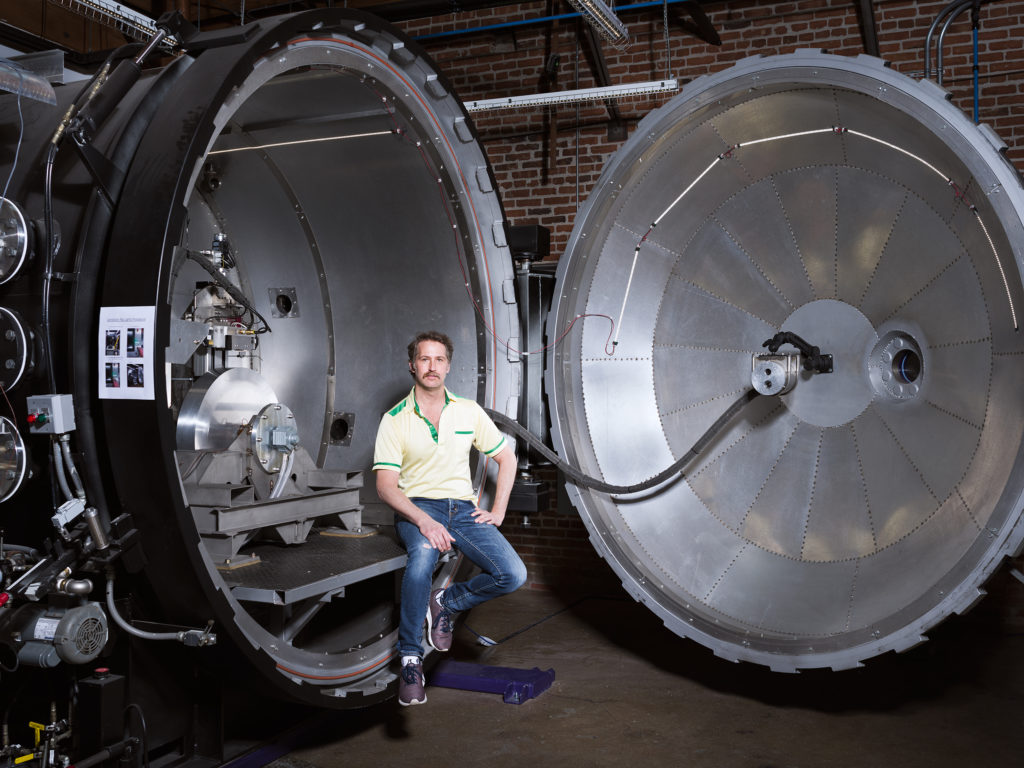

Caption: Brogan BamBrogan at Hyperloop One’s downtown Los Angeles headquarters. Photo: Peter Bohler
Just sitting there, relaxed, an ordinary guy with an ordinary machine. You don’t have to know what it is to know it is tech, scientific. An underwater vehicle in the manner of Jules Verne maybe? An incredible shrinking craft that can go inside the body a la Inner Space? No, it’s a Hyperloop pod, a potential mode of transport of the future. How far in the future we don’t yet know. But the ordinariness of the scientist is arresting. His polo shirt and mustache seem straight out of the 80’s and the still heady days of Space Shuttles and Space Camp. If it had been sepia toned it would evoke the days of railroad expansion or early flight–Those Magnificent Men in Their Flying Machines. It shows that extraordinary science can be done by the everyday Joe, the person committed to it. At least that’s what the image implies: you can Google the rest.- Edward Brydon
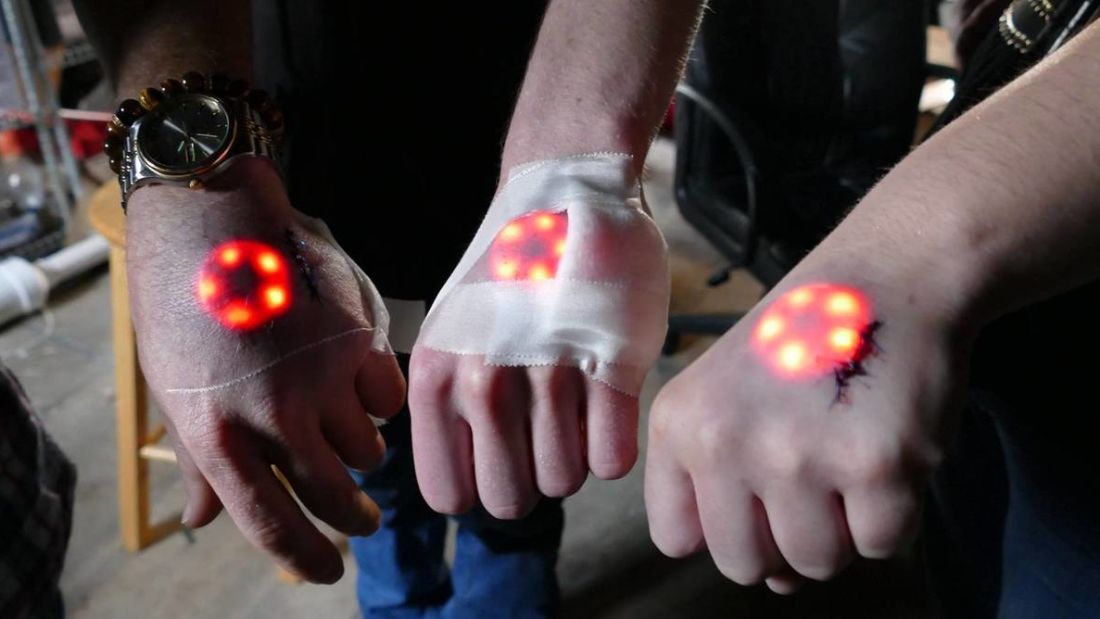

Caption: Grindhouse Wetware. Photo: Grindhouse/Ryan O’Shea
What’s under your skin? Flesh and bones, and technology. In this case, Northstar Version 1s magnetically-activated LED-equipped silicon implants developed by Grindhouse Wetware. A significant movement has already gone beyond wearable tech into the realm of technology integrated with the body. In a practice known as body hacking, people implant devices into their body to augment their skills or their experience of the world, e.g., near-field communication (NFC) chips–the chips found in the cards you hold near doors in a hotel and to open them, or in bank cards to enable contactless payment. Of course, what comes with this is the possibility that someone could hack into the implanted technology and alter it, whether covertly or overtly. But Grinders, as people who engage in body hacking are known, view the body as something to be experimented on. They believe that “transhumanism,” the symbiosis of the body and technology to become something more than human, is the next step in our evolution. Are we destined to become the Borg of Star Trek?- Edward Brydon
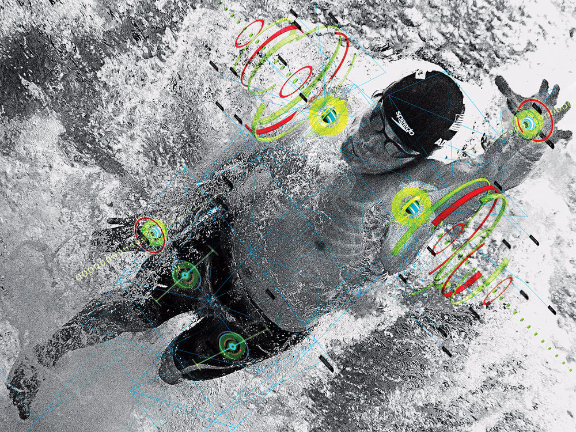

Caption: Swimmer, Nathan Adrian. Photo: Illustration: Graham Murdoch, Original Photo: Francois Xavier Marit / AFP / Getty Images
Comic book actions often have exaggerated movements. To understand the mechanics of our real-life superheroes, such as athletes, we can approach it the way animators do. Edweard Muybridge is the most famous and possibly first person to use photography to investigate motion by using individual film frames to show that all four hooves of a horse left the ground in a gallop. Here the swimmer has LEDs on his body that are picked up by software. The image is then “improved” so that we can see the mechanics involved in the overlaid graphics. These give the photograph an illustrative quality, much like an action hero comic. Photography is often thought of as being able to show us something that the naked eye cannot see. Well in this case, it needs further explanation. Combined with data, interpolation and graphics, it gives a better understanding of how a swimmer moves through the fluid around them–helping the swimmer and their coaches analyze their mechanics and improve upon them.- Edward Brydon
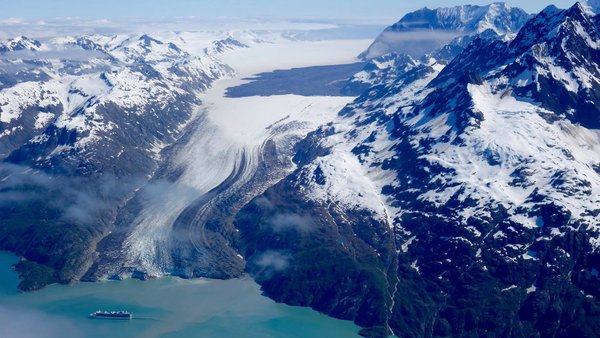

Caption: A landslide on the Lamplugh Glacier, in Glacier Bay National Park, Alaska, on June 28 caused seismic tremors about as strong as a small earthquake. Photo: Paul Swanstrom/Mountain Flying Service
This zoomed out view of the Lamplugh Glacier in Glacier Bay National Park, Alaska at first seems serene, beautiful. The kind of awe-inspiring shot any tourist on that cruise ship would love to get. But it also holds in it the cold, hard truth of climate change. A melting glacier. The muck in the water surrounding the boat comes from a landslide, the strength of which caused tremors reminiscent of a small earthquake. Is Mother Nature shaking herself down, making herself heard in face of tourists who just want to be wowed? The boat looks awfully small at this scale.- Edward Brydon
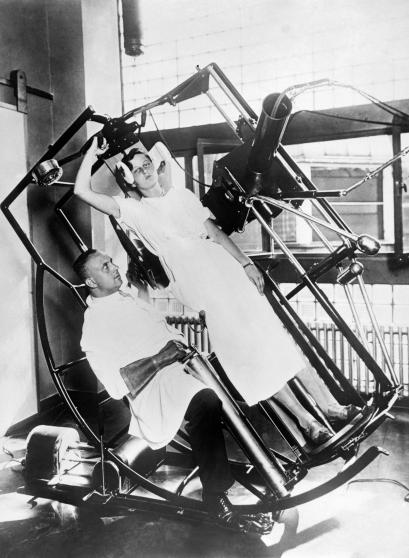

Caption: One of the advanced wonders at the Roentgen Institute, the modern Roentgen ‘look through’ machine, which prevents any injury to the treating physician, Frankfurt, Germany circa 1929. Photo: Underwood Archives/Getty
At the time, these pictures introduced wonderful new advances and inventions to the public, helping to drum up interest and popular appeal by familiarizing people with them. Reacting now, these photos of science and engineering past can be tinged with romanticism. They can make us think about the role of science in our lives, and our hopes and dreams of the future. But they can also provoke incredulousness. Science advances so fast that what was once a huge breakthrough, or seen as futuristic, rapidly becomes anachronistic. The images can have an old B-movie feel to them, like this one of slightly sinister octopus-like tubes used for radiation treatment. The use of X-rays to see into the body and radiation as a magic cure-all therapy were revolutionary breakthroughs at the time. But as their use became more common, what was thought to be completely safe was found to have distinct health risks. So when we look at the pictures of the past, they are often colored by the knowledge we have compiled since the original breakthrough and the picture’s publication, and any regrets that might come with that. Science is not an end point, a piece of dogmatic truth, but a process, advancing one bit at a time as a piece of knowledge gleaned from an experiment or idea reveals new questions to ask. – Edward Brydon
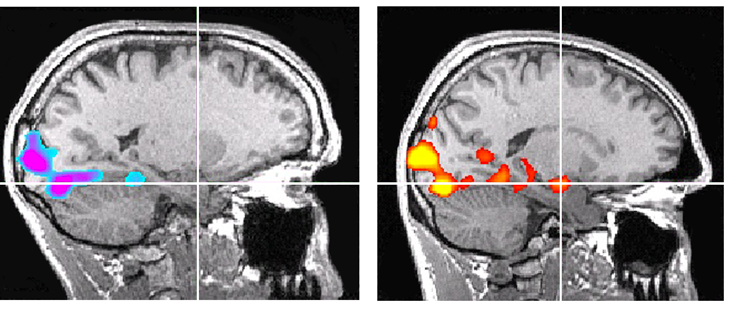

Caption: Scans compare Honnold’s brain (left) with a control subject’s (right), a rock climber of a similar age. Crosshairs mark the amygdala, a group of nuclei involved in generating fear. As both climbers look at the same arousing images, the control subject’s amygdala glows, while Honnold’s remains inert, showing no activity whatsoever. Photo: Jane Joseph/Medical University of South Carolina
What goes on inside the brain of @alexhonnold, a solo rock climber who seems to hold no fear? Scientists can try get some clues into the extraordinary minds and capabilities of people like Alex using functional magnetic resonance imaging (fMRI). The image shows Alex’s brain on the left and another rock climber’s on the right. The crosshairs zero in on the amygdala, the region of the brain where fear is processed. The crosshairs also evoke the narrowing of our vision when we are confronted with something that elicits fear, the tunnel vision that enables us to focus on that thing in the moment before we react. In this case, it could be Alex and the other person looking at a vertigo-inducing image of a sheer drop from a rock wall. On the left, Alex remains unmoved, unemotional, rational, maybe even excited or joyful about the problem he is about to tackle. On the right, there’s a burst of energy as the other climber looks over the edge. Whether they, or we, could process and suppress that fear to go ahead and start the climb or descent is another part of the complex interactions that happen in the circuits of the brain. We are still trying to understand it. In the future, will we be able to image the brain and find out how fear is processed in real time, not just with pictures but in real life situations?- Edward Brydon
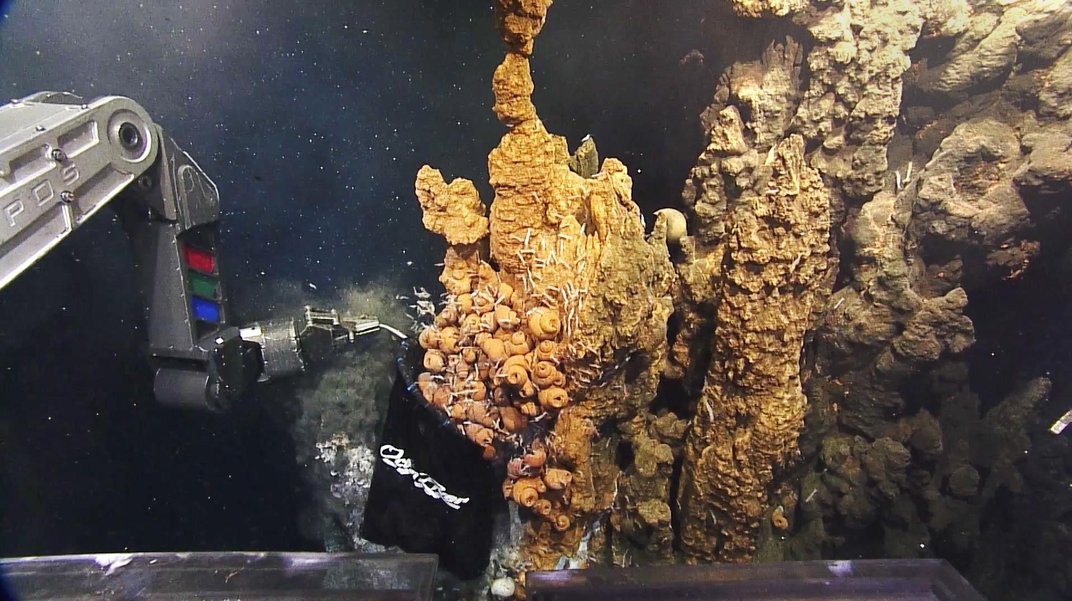

Caption: ROPOS scoops a sample into one of the collecting bags. By first surveying the site, the crew was able to confidently select the best sampling spots. Photo: SOI/ROV/ROPOS
While Curiosity explores Mars, we still don’t completely know our own planet. Scientists also have robots to help them explore the dark and sometimes toxic depths of our oceans too. That’s what this photo shows. At first glance, with all the bad news about the destruction of the deep ocean floor and marine life by deep sea trawling, you could be forgiven for thinking this image was about that damage. It is therefore even more important we see these spectacular images of underwater research. Increasing public awareness can have a positive impact, funding our understanding of the life and geology under our waters. Ever since scientists started to explore deeper in the oceans, they have discovered amazing new biology, such as extremophile bacteria that can tolerate incredibly high temperatures or otherwise toxic environments. These same bacteria yielded the enzymes that are essential to the field of molecular biology because they could copy and amplify DNA into measurable amounts. Precursors of the ones used today in genetic sequencing, these enzymes are becoming cheap enough to use to tailor specific treatments for patients based on their genetics. So an endeavor that might seem esoteric and about helping us understand oceanic ecosystems also has important practical implications in science and medicine. An image like this, with its aura of mystery and pleasing aesthetics creates the visual interest needed to get the public interested in such research. And it proves we are still pushing the boundaries of what is possible.- Edward Brydon
Follow us on Instagram (@readingthepictures) and Twitter (@readingthepix), and subscribe to our newsletter.
Topic
A curated collection of pieces related to our most-popular subject matter.
Panelists
UMBC Professor of Media & Communication Studies
Curator and Producer, Seeing Science: Photography, Science & Visual Culture and Author, Photography Changes Everything
Curator of Photography, SFMOMA
Kurt Mutchler
Senior Editor, Science Photography Department, National Geographic magazine
Max Mutchler
Hubble Heritage Project, Space Telescope Science Institute, Johns Hopkins University
Nathan Stormer (Moderator)
Department Chair and Professor of Communication and Journalism, University of Maine


Reactions
Comments Powered by Disqus